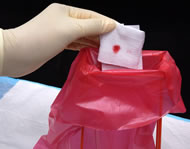 Exposures to blood and other body fluids occur across a wide variety of occupations. Health care workers, emergency response and public safety personnel, and other workers can be exposed to blood through needlestick and other sharps injuries, mucous membrane, and skin exposures. The pathogens of primary concern are the human immunodeficiency virus HIV, hepatitis B virus HBV, and hepatitis C virus HCV. Workers and employers are urged to take advantage of available engineering controls and work practices to prevent exposure to blood and other body fluids.
Exposures to blood and other body fluids occur across a wide variety of occupations. Health care workers, emergency response and public safety personnel, and other workers can be exposed to blood through needlestick and other sharps injuries, mucous membrane, and skin exposures. The pathogens of primary concern are the human immunodeficiency virus HIV, hepatitis B virus HBV, and hepatitis C virus HCV. Workers and employers are urged to take advantage of available engineering controls and work practices to prevent exposure to blood and other body fluids.
Month: July 2012
What is COPD?
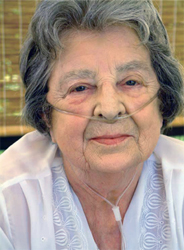 Chronic obstructive pulmonary disease COPD refers to a group of lung diseases that block airflow as you exhale and make it increasingly difficult for you to breathe. Emphysema and chronic asthmatic bronchitis are the two main conditions that make up COPD. In all cases, damage to your airways eventually interferes with the exchange of oxygen and carbon dioxide in your lungs. COPD is a leading cause of death and illness worldwide. Most COPD is caused by long-term smoking and can be prevented by not smoking or quitting soon after you start. This damage to your lungs can’t be reversed, so treatment focuses on controlling symptoms and minimizing further damage.
Chronic obstructive pulmonary disease COPD refers to a group of lung diseases that block airflow as you exhale and make it increasingly difficult for you to breathe. Emphysema and chronic asthmatic bronchitis are the two main conditions that make up COPD. In all cases, damage to your airways eventually interferes with the exchange of oxygen and carbon dioxide in your lungs. COPD is a leading cause of death and illness worldwide. Most COPD is caused by long-term smoking and can be prevented by not smoking or quitting soon after you start. This damage to your lungs can’t be reversed, so treatment focuses on controlling symptoms and minimizing further damage.
Small Business Assistance | Safety Pays Program
 OSHAs “$afety Pays” program can help employers assess the impact of occupational injuries and illnesses on their profitability. This program uses a companys profit margin, the average costs of an injury or illness, and an indirect cost multiplier to project the amount of sales a company would need to cover those costs. The program is intended as a tool to raise awareness of how occupational injuries and illnesses can impact a companys profitability, not to provide a detailed analysis of a particular companys occupational injury and illness costs.
OSHAs “$afety Pays” program can help employers assess the impact of occupational injuries and illnesses on their profitability. This program uses a companys profit margin, the average costs of an injury or illness, and an indirect cost multiplier to project the amount of sales a company would need to cover those costs. The program is intended as a tool to raise awareness of how occupational injuries and illnesses can impact a companys profitability, not to provide a detailed analysis of a particular companys occupational injury and illness costs.
Strangulation Hazard – Baby Monitor Cords
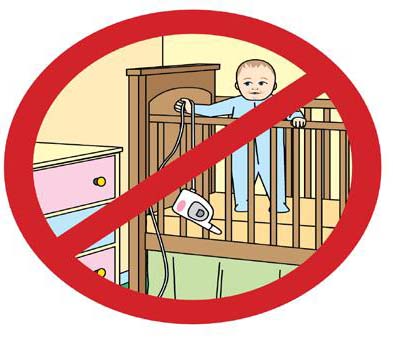 Cords from baby audio and video monitors present a strangulation hazard to young children if the monitors are placed within reach. Parents should take the following precautions to help prevent strangulation:
Cords from baby audio and video monitors present a strangulation hazard to young children if the monitors are placed within reach. Parents should take the following precautions to help prevent strangulation:
- Check the location of all monitors and products with electrical cords.
- Make sure potentially hazardous products with cords are not within reach of children.
- Keep monitors at least 3 feet from any part of cribs or beds.
Since 2002, seven children have died due to entanglement in a baby monitor cord and three children have nearly been strangled. The victims were between 6 and 20 months old, according to a press release from JPMA.
Gravity Can Kill – Fall Protection Saves Lives
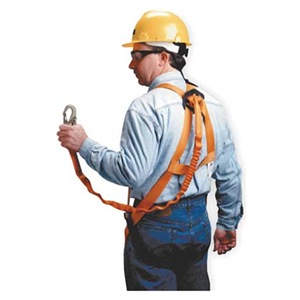 The following tragic accident is an example of why it’s critical to wear fall protection.
The following tragic accident is an example of why it’s critical to wear fall protection.
A worker hanging cable was suspended about 18 feet in the air in the bucket of the truck, working with a a steel cable that was attached to utility poles on both sides of Central Avenue Pike. The cable was stretched across the roadway.
A pickup truck drove over the cable, and the cable hooked on the rear bumper, causing the cable to stretch tight before breaking free. The worker was hit by the cable and thrown from the bucket of the truck, then fell to the ground.
via Report: Worker hanging cable died after falling 18 feet to the ground | wbir.com.
Lightning Can be Deadly
 Summer is the peak season for one of the nations deadliest weather phenomena— lightning. But don’t be fooled, lightning strikes year round. In the United States, an average of 54 people are reported killed each year by lightning. To date, there have been 16 deaths in 2012. Hundreds of people are permanently injured each year. People struck by lightning suffer from a variety of long-term, debilitating symptoms, including memory loss, attention deficits, sleep disorders, chronic pain, numbness, dizziness, stiffness in joints, irritability, fatigue, weakness, muscle spasms, depression, and more. Lightning is a serious danger.
Summer is the peak season for one of the nations deadliest weather phenomena— lightning. But don’t be fooled, lightning strikes year round. In the United States, an average of 54 people are reported killed each year by lightning. To date, there have been 16 deaths in 2012. Hundreds of people are permanently injured each year. People struck by lightning suffer from a variety of long-term, debilitating symptoms, including memory loss, attention deficits, sleep disorders, chronic pain, numbness, dizziness, stiffness in joints, irritability, fatigue, weakness, muscle spasms, depression, and more. Lightning is a serious danger.
via NWS Lightning Safety.
10 Most Dangerous Jobs in America
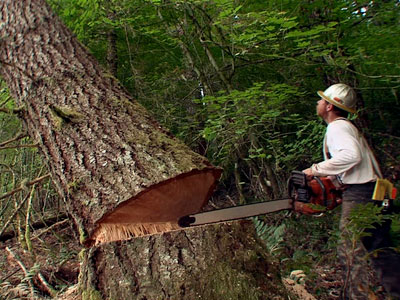 Before you complain about punching the time clock, read this list for some perspective. Maybe the coffee stinks and you don’t like your boss, but at least the threat of death or injury isn’t perpetually hanging over your head. The order may change from year to year, but these are typically the most dangerous jobs in America.
Before you complain about punching the time clock, read this list for some perspective. Maybe the coffee stinks and you don’t like your boss, but at least the threat of death or injury isn’t perpetually hanging over your head. The order may change from year to year, but these are typically the most dangerous jobs in America.
1. Logger
2. Pilot
3. Fisher
4. Iron/Steel Worker
5. Garbage Collector
6. Farmer/Rancher
7. Roofer
8. Electrical Power Installer/Repairer
9. Sales, Delivery, and Other Truck Driver
10. Taxi Driver/Chauffeur
Liquid Candy: How Sugary Drinks Are Harming America’s Health
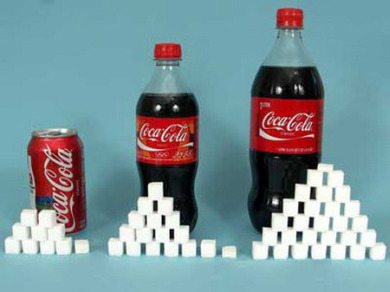 More than two-thirds of Americans are overweight or obese and the increased consumption of sugary drinks is a big part of why this is happening.
More than two-thirds of Americans are overweight or obese and the increased consumption of sugary drinks is a big part of why this is happening.
Americans consume gargantuan quantities of carbonated soft drinks and suffer untoward health consequences. Companies annually produce enough soda pop to provide 557 12-ounce cans—52.4 gallons—to every man, woman, and child.
Carbonated soft drinks are the single biggest source of calories in the American diet, providing about 7 percent of calories; adding in noncarbonated drinks brings the figure to 9 percent. Teenagers get 13 percent of their calories from carbonated and noncarbonated soft drinks.
Soft drinks provide large amounts of sugars (mostly high-fructose corn syrup) to many individuals’ diets. Soda pop provides the average 12 to 19-year-old boy with about 15 teaspoons of refined sugars a day and the average girl with about 10 teaspoons a day. Those amounts roughly equal the government’s recommended limits for teens’ sugar consumption from all foods.
Soft drinks are a problem not only for what they contain, but for what they push out of the diet. In 1977–78, boys consumed more than twice as much milk as soft drinks, and girls consumed 50 percent more milk than soft drinks. By 1994–96, both boys and girls consumed twice as much soda pop as milk. Heavy soft drink consumption is associated with lower intake of numerous vitamins, minerals, and dietary fiber.
The empty calories of soft drinks are likely contributing to health problems, particularly overweight and obesity. Those conditions have become far more prevalent during the period in which soft drink consumption has soared. Several scientific studies have provided experimental evidence that soft drinks are directly related to weight gain. That weight gain, in turn, is a prime risk factor for type 2 diabetes, which, for the first time, is becoming a problem for teens as well as adults. As people get older, excess weight also contributes to heart attacks, strokes, and cancer.
via Liquid Candy: How Sugary Drinks Are Harming America’s Health ~ CSPI.
Warning – Confined Space
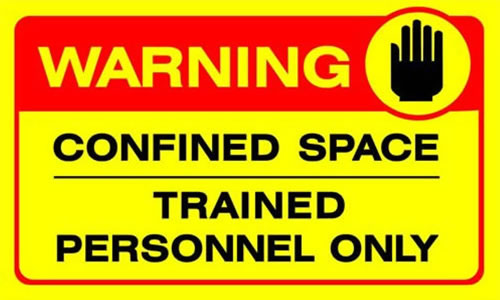 Confined Spaces can be dangerous.
Confined Spaces can be dangerous.
“Confined Space” refers to a space which by design has limited openings for entry and exit, unfavorable natural ventilation which could contain or produce dangerous air contaminants, and which is not intended for continuous employee occupancy. Confined spaces include but are not limited to storage tanks, compartments of ships, process vessels, pits, silos, vats, degreasers, reaction vessels, boilers, ventilation and exhaust ducts, sewers, tunnels, underground utility vaults, and pipelines. According to data collected by the U.S. Department of Labor USDOL, Bureau of Labor Statistics BLS Census of Fatal Occupational Injuries CFOI program, fatal injuries in confined spaces fluctuated from a low of 81 in 1998 to a high of 100 in 2000 during the five-year period, averaging 92 fatalities per year.
via CDC – Confined Spaces – NIOSH Workplace Safety and Health Topic.
Walking Safely
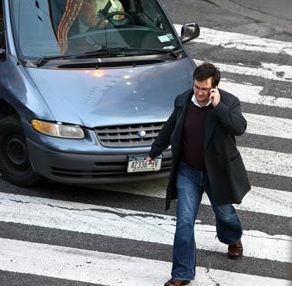 Safety while walking is a shared responsibility for all road users, including drivers and pedestrians. The following are some tips to improve safety.
Safety while walking is a shared responsibility for all road users, including drivers and pedestrians. The following are some tips to improve safety.
Safety tips for pedestrians
Be safe and be seen: make yourself visible to drivers
- Wear bright/light colored clothing and reflective materials.
- Carry a flashlight when walking at night.
- Cross in a well-lit area at night.
- Stand clear of buses, hedges, parked cars or other obstacles before crossing so drivers can see you.
Be smart and alert: avoid dangerous behaviors
- Always walk on the sidewalk; if there is no sidewalk, walk facing traffic.
- Stay sober; walking while impaired increases your chance of being struck.
- Don’t assume vehicles will stop; make eye contact with drivers, don’t just look at the vehicle. If a driver is on a cell phone, they may not be paying enough attention to drive safely.
- Don’t rely solely on pedestrian signals; look before you cross the road.
- Be alert to engine noise or backup lights on cars when in parking lots and near on-street parking spaces.
Be careful at crossings: look before you step
- Cross streets at marked crosswalks or intersections, if possible.
- Obey traffic signals such as WALK/DON’T WALK signs.
- Look left, right, and left again before crossing a street.
- Watch for turning vehicles; make sure the driver sees you and will stop for you.
- Look across ALL lanes you must cross and visually clear each lane before proceeding. Just because one motorist stops, do not presume drivers in other lanes can see you and will stop for you.
- Don’t wear headphones or talk on a cell phone while crossing.
